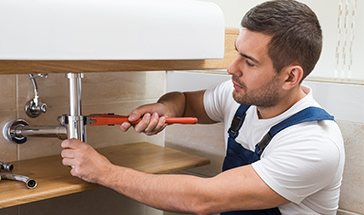Cistern Tank
A cistern is a kind of water tank, often underground or above ground, that stores rainwater. This water can then be used for purposes like irrigation and hygiene. The word cistern comes from the Latin word “cista”, which means “box” or “chest.”
Cisterns are typically used to store potable water in areas where fresh drinking water is not readily available, such as in arid climates and areas where groundwater levels are too low to support domestic use. It comes in different shapes and sizes and has been around for centuries.
Although cisterns already existed for hundreds of years, many households still use them. But like any other water fixture, modern cisterns should be maintained and repaired regularly by professional plumbers near you. Without further ado, here’s what you should know about cisterns and the benefits they can give to your household.
What is a Cistern and How Does It Work?
As mentioned, a cistern is a type of water tank or container used to collect water either for irrigation or as storage for the household’s water supply. Cisterns can either be small or large, above- or underground. Unlike wells, cisterns’ walls are waterproof.
It works by collecting water from an outside source and then piped into the household water system. A cistern is composed of different parts, such as:
Water source
Cisterns collect water from rain, wells, springs, and other sources, as well as through certified water-hauling vehicles.
Fill port
This is the part of the cistern where fresh water is channeled to the cistern. Fill ports come with filtering mechanisms to prevent contaminants and debris from affecting water quality.
Storage reservoir
This is the cistern itself, a watertight container that is connected to the pipes and the water source. Choosing the right cistern in terms of size and location depends on a household’s daily water supply needs.
For example, a family of 3 uses about 200 gallons of water a day. An average residential cistern can hold up to 5,000 gallons. So it’s a good idea that you choose a cistern that can hold several days’ worth of water supply at a time.
Reservoir hatch
It is a lockable access hatch for water inspection and cleaning. A reservoir hatch should also be watertight to prevent water contamination.
Withdrawal pipe
This pipe connects the reservoir to your home’s water supply. To prevent debris and all sorts of sediment from contaminating your water pipes, it should be installed a couple of inches above the bottom of the cistern.
Water pump
You will need a water pump if the water storage is lower than the main water inlet to the house. This is to help push the water into the household pipes.
Cisterns: Pros and Cons
Thinking of getting a cistern water system? Here are the pros and cons you should consider:
Pros
-
- Stores uncollectible water such as rainwater and make it usable
-
- Allows effective and efficient use of wells and springs
-
- Useful especially during dry spells/droughts
-
- Doesn’t depend on electricity (gravity-fed cisterns)
-
- Avoid groundwater and contaminants
Cons
-
- Difficult and expensive to install especially if you have a bigger family
-
- Needs regular inspection, cleaning, and testing to ensure the water stays potable and safe
-
- More complicated than wells or city water systems
You can ask your friendly-neighborhood plumbing service in Spring Hill TN for your pipe and drain system repair and installation needs. 



